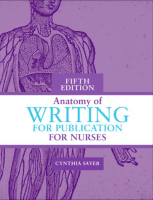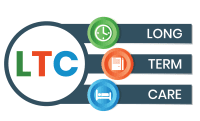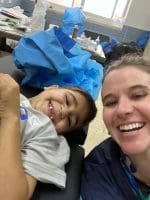Higher education bill creates new opportunities for nurses and schools
President Bush signed the Higher Education Opportunity Act of 2008 (P.L. 110-315) into law on August 14, 2008. This marks the first time in a decade that Congress has updated the law governing federal aid to higher education. The new law contains a number of programs designed to keep college education affordable, including an overhaul of the Pell grant for low-
income students that increases the maximum grant to $8,000 a year (from $5,800) and allows the grants to be used for year-round studies. The law also creates a new “college navigator” website listing the average total education costs of all programs eligible for federal aid and loans. It requires the schools with the top 5% of cost increases submit detailed reports to the Secretary of Education explaining the reasons for the increases and plans to keep education costs down in the future. ANA also recommended a number of programs specifically designed to support nursing students. These programs include:
$10,000 Loan Repayments for Nurses: The Higher Education Opportunity Act qualifies RNs to receive $10,000 in loan repayments. This new program would designate registered nursing as an “area of national need” and qualify RNs working full time in a clinical setting or as faculty of nursing for $10,000 in loan repayments.
Capitation Programs for Schools of Nursing: This law contains a program, long supported by ANA, that provides a new funding stream for schools of nursing. If fully funded, these “capitation programs” would encourage schools of nursing to increase capacity by providing $3,000 grants for each matriculated nursing student above and beyond the average number of students calculated over the previous 4 years. These funds would be divided among graduate-level (20%), baccalaureate (40%), and associate-degree (40%) programs. The hallmark of these funds is their flexibility; they could be used for any pressing need within the school of nursing, including faculty salaries, classrooms, and clinical training.
Graduate Assistance: The Higher Education Opportunity Act allows the Secretary of Education to provide grants to colleges of nursing and graduate nursing students to support post-baccalaureate nursing education. These grants will support programs that produce nursing faculty, a key component to increasing nursing school capacity.
Studies on Nursing School Capacity: This law incorporates the provisions of the ANA-endorsed Nursing School Capacity Act (H.R. 677). This calls upon the Institute of Medicine to conduct a study on current capacity constraints at schools of nursing and to recommend programs to overcome these constraints.
ANA is now working to educate members of Congress about the need to fund these important programs. You can help support our efforts by joining the NSTAT—the nursing strategic action team. Sign up at www.anapoliticalpower.org.
House joins Senate in supporting APRNs in home health
Representative Allyson Schwartz (D-PA) introduced the Home Health Care Planning Improvement Act (H.R. 6826) with 39 original co-sponsors on August 1, 2008. This bill is a companion to the Senate version (S. 1678) introduced on June 21, 2007. This ANA-endorsed legislation would change Medicare law to grant Nurse Practitioners, Clinical Nurse Specialists, and Certified Nurse Midwives the ability to order home health services and to sign home health plans of care.
ANA fully supports the Home Health Care Planning Improvement Act. ANA is working to educate members of Congress about the fact that advanced practice registered nurses (APRNs) represent an important and growing proportion of the healthcare workforce, often practicing in rural and other underserved areas, where physicians are scarce. Today, only physicians and podiatrists may sign home health plans of care or certify a patient for Medicare home health services. Frequently, patients experience delays in obtaining home health due to the need for discharge planners and other referring entities to locate a physician to complete Medicare paperwork. In some cases, these physicians have very little direct contact with patients who receive the majority of their care through APRNs. These needless delays in care inconvenience patients and their families. In addition, delays can result in increased cost to the Medicare system when patients are unnecessarily left in more expensive institutional settings. ANA will work to convince the new Congress that convenes in January 2009 to pass this important legislation.
Erin McKeon is Associate Director of ANA’s Government Affairs Department.

















